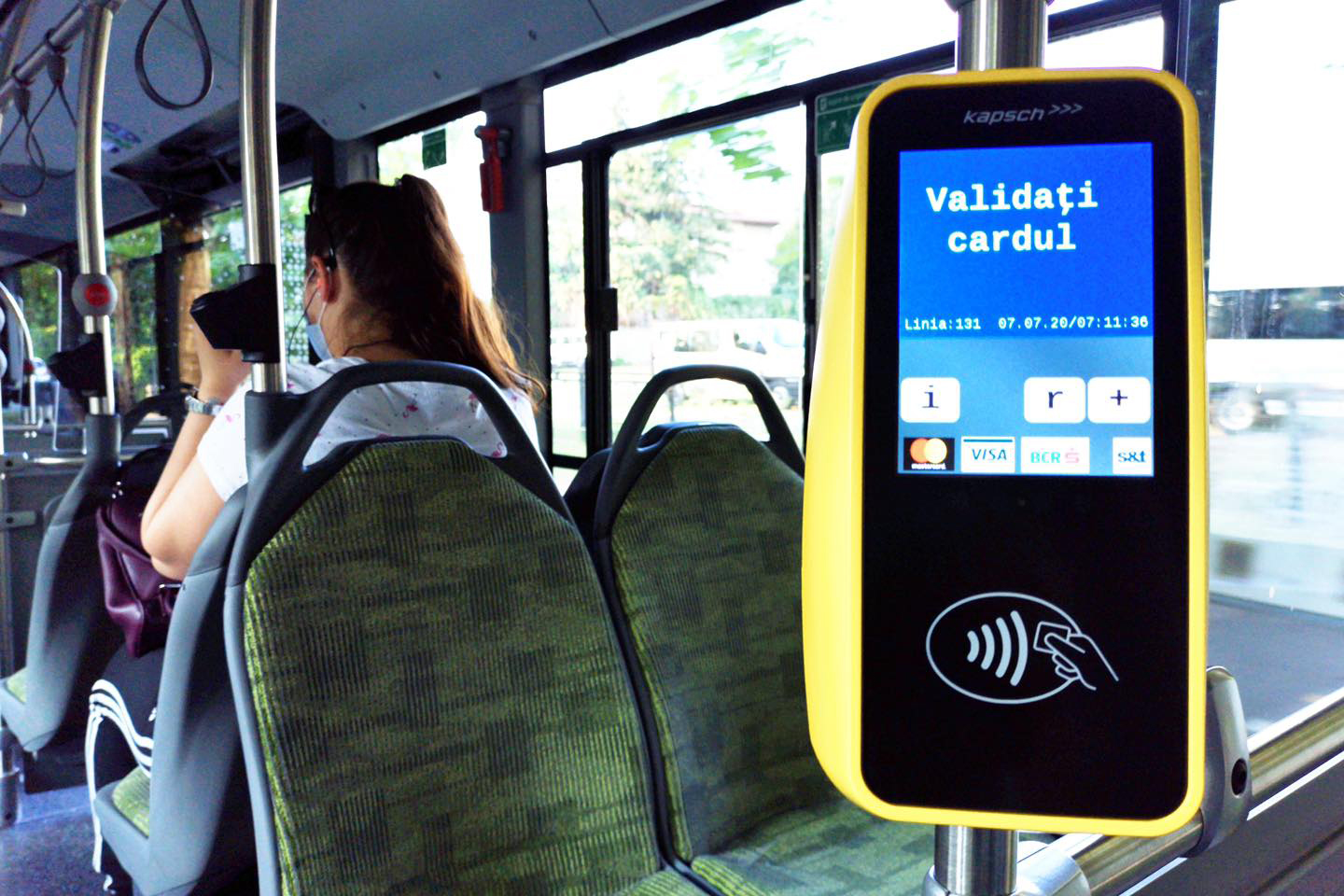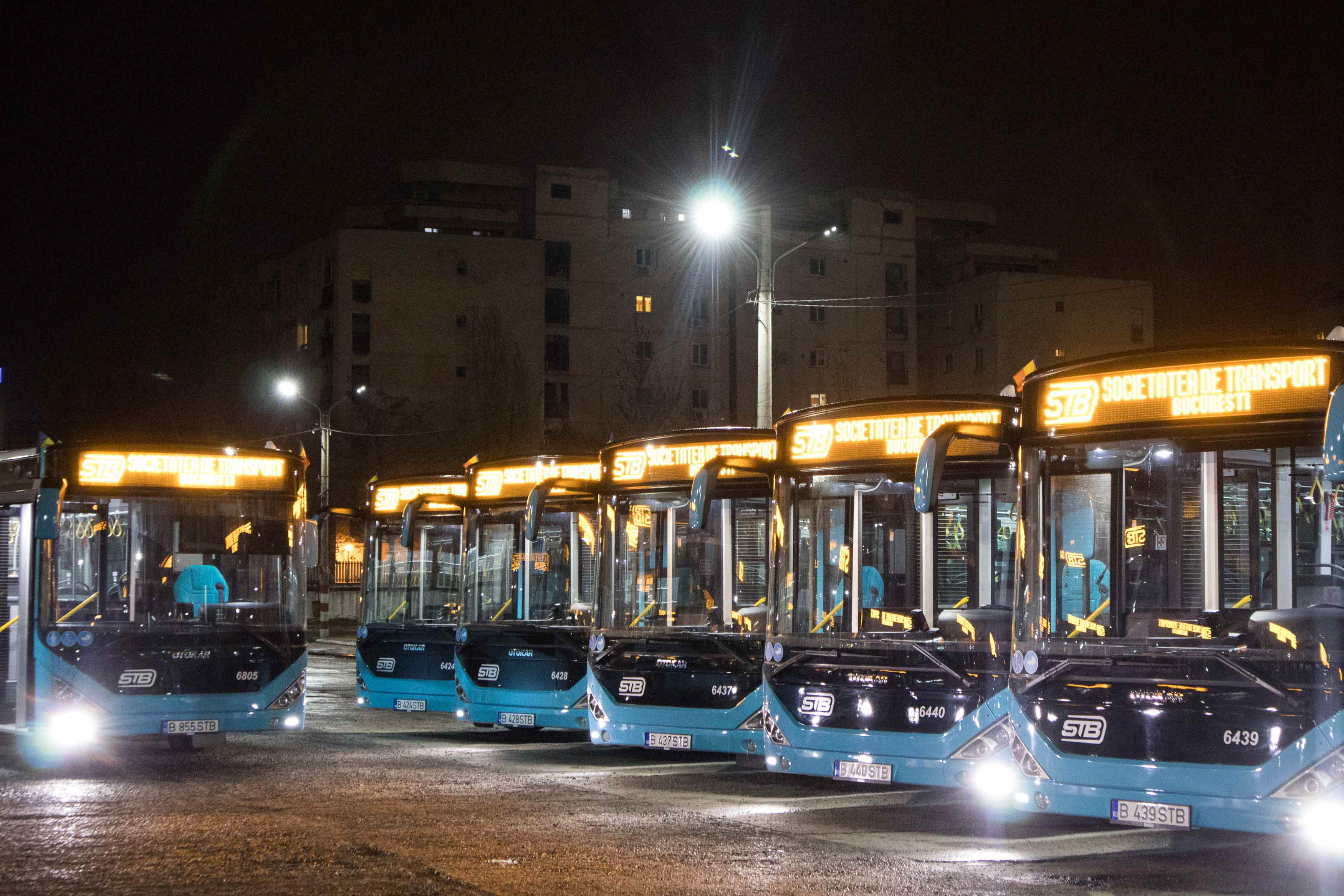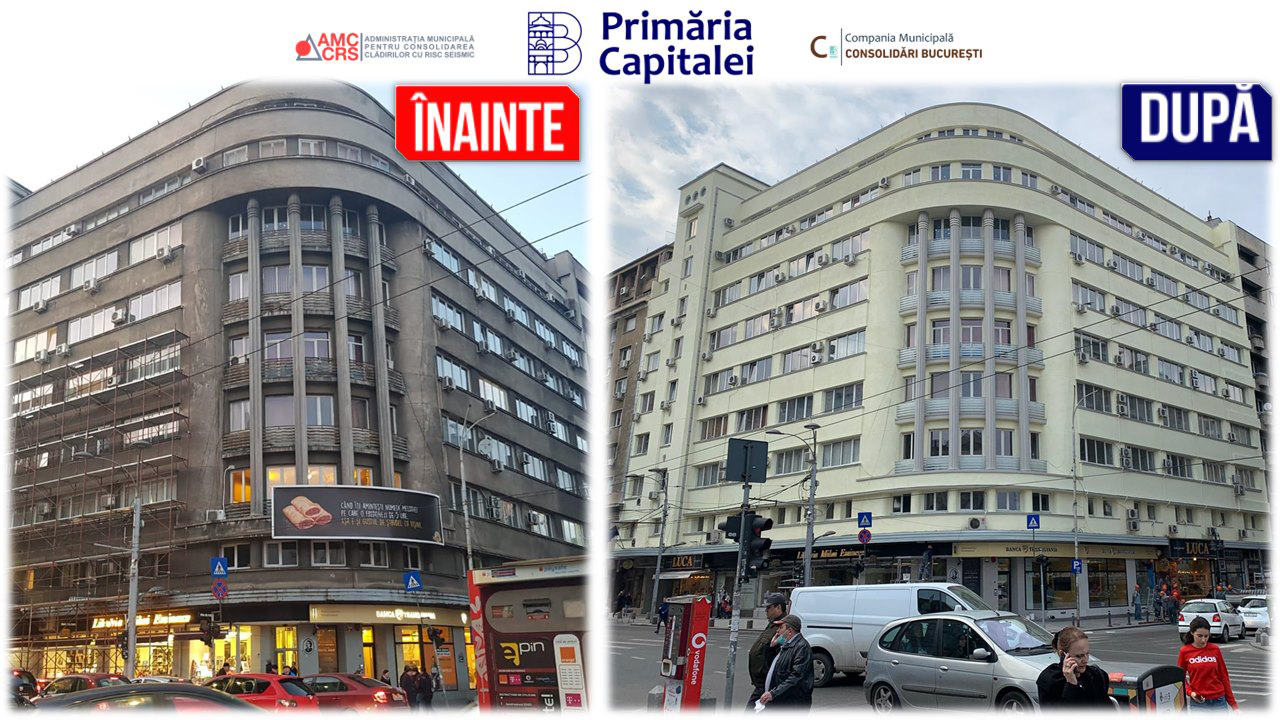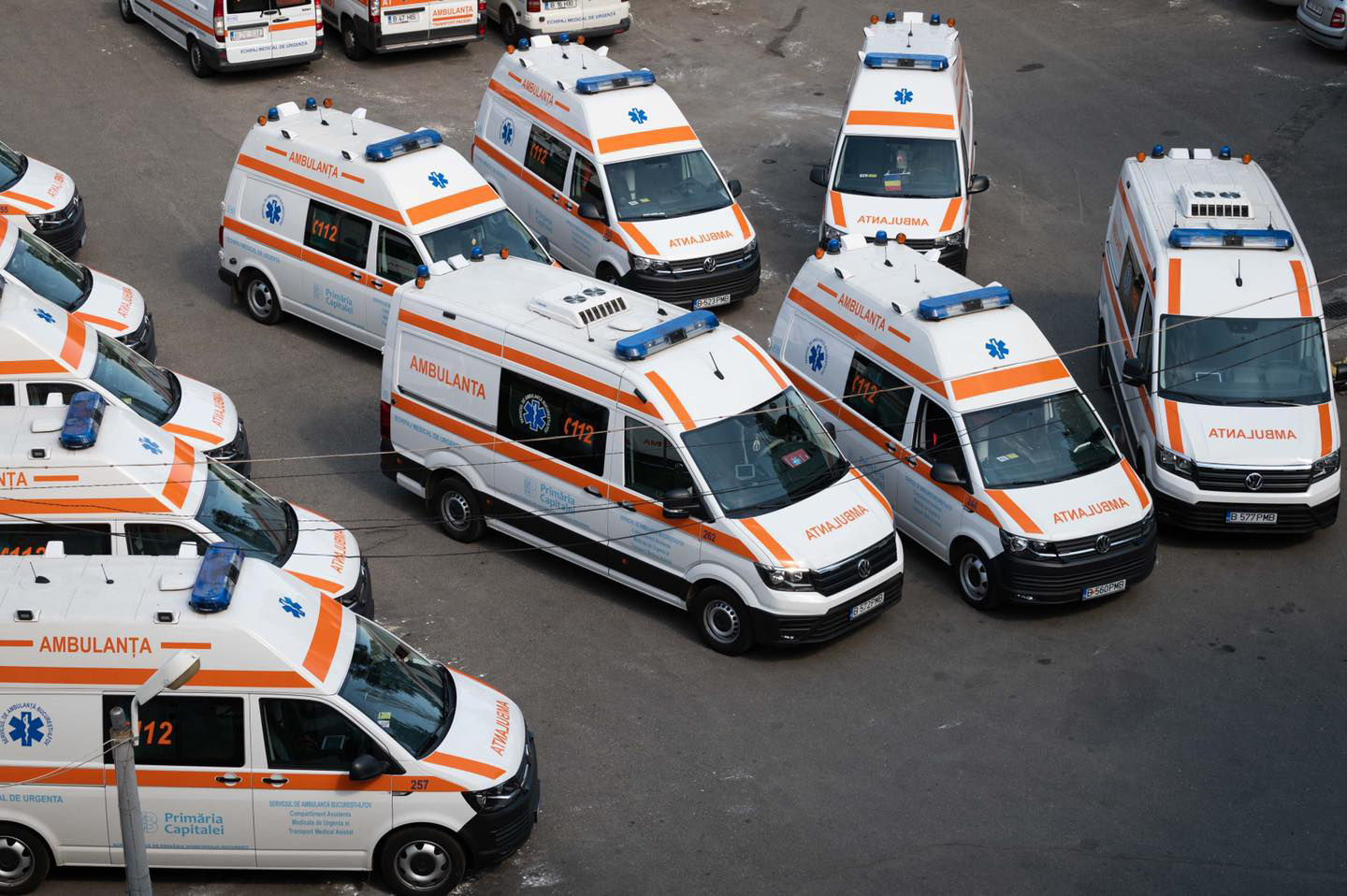:quality(80)/business-review.eu/wp-content/uploads/2020/08/dreamstime_xl_99231727.jpg)
Today’s cities are often victims of their own success. Growing populations overwhelm the world’s mega-cities, urban sprawl eats up surrounding nature, congestion causes chaos, and pollution suffocates even the most futuristic cities. While there is no cure-all for these problems, the world’s rapid digitalization may offer an answer: the smart city. By harnessing a range of coordinated digital solutions, city authorities and service providers can address structural challenges, from urban planning to mobility and environmental matters. BR sat down with Bucharest General Mayor Gabriela Firea to find out about the biggest challenges in making Bucharest a smarter city. The official highlighted the ways in which the City Hall has approached the goal of turning the Romanian capital into a smart city.
By Anda Sebesi
Want an app to involve citizens in decision-making? Need a smart traffic management system to prevent rush-hour congestion? Interested in green infrastructure to lower emissions? No problem; there’s a smart city solution for each of these objectives.
According to the 2019 Smart City Strategy Index (SCSI) published by global consultancy firm Roland Berger, successful smart cities tend to have one thing in common: a sound strategic approach. This ensures the integration of different strands and avoids ad hoc solutions. For example, e-mobility services are fairly easy to introduce to a city, but a smart city would also integrate them into intelligent traffic management systems and power them via smart electricity grids. Strategies also promote cross-sectorial solutions, such as data platforms, sensor networks, and service integration. Roland Berger’s SCSI measures the comprehensiveness and ambition of urban centres against the key ingredients of a smart city. The first version of the SCSI was published in March 2017 and analysed the plans of 87 cities. But with smart cities advancing so rapidly, Roland Berger decided to release a second version of the report.
Hence, the SCSI 2019 identifies 153 cities with an official smart city strategy, then analyses and ranks each one. Overall, the SCSI 2019 finds that while the number of cities with an identifiable, official smart city strategy is growing, many remain without such a strategy. For example, among the roughly 500 cities worldwide with a population of more than one million (by UN estimates), the company found that only 49 had an official smart city strategy.
Roland Berger’s main finding is striking: just 15 cities (10 percent) meet or exceed the 60-point score that indicates a comprehensive smart strategy. The average score is 41 points, with 40 percent of cities scoring between 40 and 60 points, and half getting less than 40 points.
As in the first SCSI report, Vienna ranks at the top with a score of 74. The Austrian capital has updated its 2015 framework strategy with a digital agenda, and scores highly due to factors such as a robust performance monitoring system. This has improved coordination and cooperation between activities and individual players and has helped to sharpen smart objectives ahead of another strategy update.
London in the UK and St. Albert in Canada ranked closely behind Vienna. London updated its strategy in 2018, while newcomer St. Albert recently launched a comprehensive master plan. Both cities have a strong focus on the application of technology and innovation across action fields.
The same index shows Asian cities dominating the rest of the top 15. Chinese cities fare best, with five top finishers from Shanghai in sixth place to Guangzhou in fourteenth. All have five-year smart plans as part of the country’s smart city initiative. Singapore, Seoul, and the Indian city of Davanagere are also among the top 15.
As for our country, according to public data cited by ZF, Romania had over 300 smart city projects in various phases of implementation in September last year, from public lighting to chat support for citizens. Bucharest, Alba-Iulia, Oradea, Cluj-Napoca, Piatra Neamt, Brasov, Sibiu, Arad, Constanta, and Iasi are the smartest cities in Romania right now. “In recent years, we have witnessed an increasing interest in the smart city concept from Romania’s utilities companies, especially players from the telecom and energy sectors. We constantly discuss these topics with our clients and try to design bold plans together. We expect to see an increasing number of smart projects in Romanian cities in the next few years,” said Andra Ioana, senior project manager at Roland Berger Bucharest, for ZF.
“Our second year of smart city market analysis for Romania shows a mix of starting enthusiasm among several municipalities, a relative slowdown in terms of project execution, as well as new initiatives – a sign that municipalities are waiting for pilot projects results or are even facing budgetary restraints while adapting their flows to the innovation they are attempting to introduce. There is also a sometimes misguided rush to categorise every initiative as a smart city one – from server security certificates to implementing a simple set of video cameras or LED lighting. The market is also starting to develop a need for smart city conceptual theory and for a core group of specialists with strictly smart city-related duties,” said Cornel Barbut, CEO at Vegacomp Consulting, for BR.
Bucharest on its way to becoming a smarter city
Romania’s capital has made significant progress towards becoming a smart city in recent years, yet it is far from being ready to join the league of top smart cities worldwide. According to the first edition of the Smart City Index Report, released by IMD and the Singapore University for Technology and Design last year, Bucharest ranked 85th out of 102 cities. But the recent progress is important, and a step-by step approach is best in a context where rapid technological change has an increasing impact on our day-to-day lives.
“The city’s sustainable development involves finding a balance between the current situation, which in many respects is unfavourable, with projects which have been started but not yet completed, and future plans. It doesn’t matter how good of a vision the mayor has; if it cannot be translated into something practical through well-articulated strategies, failure will be inevitable,” says Bucharest Mayor Gabriela Firea.
At the moment, the Bucharest City Hall has six major focus areas to make Romania’s capital a smart city: mobile apps , modernising public transportation, reinforcing builidings, non-reimbursable funds, infrastructure projects, and healthcare.

Apps making Bucharest a smarter city
From apps that allow you to pay for public transport online by card (B-Pay) to those that help you reach your destination more easily using overground public transportation (InfoTB), improve traffic conditions (Trafic Alert Bucharest), help you find quick parking (Parking Bucharest), notify authorities about people in need for social assistance (Social Alert Bucharest) or promote tourist attractions, the city is growing increasingly smarter. “We want public transport in Bucharest to become more attractive. Therefore, we aim to offer innovative, user-friendly technologies which are adapted to current demands and can ease the use of public transport. Along with other measures that we have already taken, B-Pay is part of our plan for the city to become as smart as possible,” says the Mayor of Bucharest.
As for the InfoTB app, Firea adds that both the subway system as well as online ticket payments were added to the features in December last year. Additionally, the AVL Platform and Trapeze Planning System are two non-mobile apps designed for the internal use of public transport operators, meant to increase the effectiveness of the entire transport system in Bucharest. “These two platforms are important because they assure the data collection needed for the InfoTB app to work and represent a rapid technological change in the way the public sector works. Furthermore, we’re seeing Bucharest having developed quickly from a city with an extremely low level of public transport predictability to a level aligned to European standards,” says Firea.
Along with the currently available apps, the City Hall also has some others in development. The Tourism, Cultural and Spiritual Guide is one of those apps, and it is designed to better promote Bucharest’s tourist attractions.
“Although Bucharest has plenty of tourist attractions that could be included in different guides, only some of them are being promoted well right now. We aim to make other places in Bucharest known among both foreign and Romanian tourists, and even among Bucharest’s citizens,” she says.
Public transportation
With 830 new public transport vehicles (400 new Euro 6 buses already in circulation, 130 hybrid buses, 100 new trolley buses, 100 new trams, and 100 electric buses), Bucharest could have lighter traffic and lower levels of polution on its streets. “Each month starting July until the end of this year, 20 hybrid buses will arrive to Bucharest, and nine more will be available in January 2021. As for the acquisition of the 100 trolley buses, the contract has been signed and the vehicles will be delivered over 16 months starting with November 2020. Last but not least, the new trams and electric buses are in the process of being acquired,” says Firea. In addition, in order to facilitate the circulation of public transport vehicles, the five most used tram lines have been separated from car lanes, and legislation was changed to allow buses to run on tram lines where possible.

Building reinforcement
With the support of public and private funds, 1 million sqm have been valuated and some works which had started back in 2010 have been resumed in the last three years. “With the aim of bringing to light some of Bucharest’s architectural jewels, we took measures to expropriate 25 historic buildings and launched a programme to refurbish building facades in central Bucharest. In less than a year, 10 buildings have been refurbished, some of which were historic, and other four will be completed this year,” says the Mayor. In addition, the City Hall continued the valuation and reinforcement of buildings with class 1 seismic risk, with some EUR 25.5 million allocated for this purpose in 2020 alone.

Non-reimbursable funds
The non-reimbursable funds used by the Bucharest City Hall focused on several main directions: transport, heating system rehabilitation, sewage treatment, sanitation system, and safe drinking water. During Firea’s tenure, the Bucharest City Hall accessed funds worth EUR 370 million (of which EUR 276 million are non-reimbursable) for 14 projects to acquire new transport vehicles and upgrade 1.1 km of double tram lines. The rehabilitation of the capital’s heating system consisting of upgrades to 200 km of pipes and estimated at EUR 330 million (of which EUR 278 million is non-reimbursable) was submitted in June. Furthermore, the Glina 2 Project, worth about EUR 390 million, has been resumed and involves the extension of the cleaning station and the rehabilitation of the main used water collection plant in Bucharest, along with the construction of the first mud incinerator in Romania. “Last but not least, 18,000 citizens from the Ghidigeni, Oltenitei, Cheile Turzii, and Henri Coanda districts now have access to safe drinking water and sanitation thanks to a 24-km water-supply network built with an investment of EUR 70 million, of which EUR 40 million are non-reimbursable,” Firea added.
Healthcare system
According to the Mayor, besides the construction of new hospitals, investments in modernisation and new equipment for different wards, the City Hall also invested EUR 37 million in medical equipment between 2016 and 2019 alone. Investment recipients included the Foisor Hospital (about EUR 2 million), Coltea Hospital (EUR 1 million), Cantacuzino Hospital (EUR 890,000), Carol Davila Hospital (about EUR 820,000), Dr. Th. Burghele Hospital (EUR 450,000), and Panait Sarbu Hospital (EUR 225,000). In addition, some 106 new ambulances and 177 housing units for medical staff were acquired by the City Hall of Bucharest during Firea’s tenure.

Top 3 smart cities worldwide in 2019:
- Vienna
Country: Austria
Population: 1.7 million*
Total score: 74**
Description: Comprehensive smart city framework strategy complemented by a digital agenda; the framework is updated based on monitoring results.
- London
Country: United Kingdom
Population: 8.3 million*
Total score: 73**
Description: Digital roadmap with a dedicated smart city focus and strong emphasis on technology and innovation in light of its benefits to the people; update of earlier plans published in 2013 and 2016.
- St. Albert
Country: Canada
Population: 0.1 million*
Total score: 72**
Description: A very comprehensive smart city master plan comprising 22 strategy fields with strong technology and innovation aspects.
*City population measured by number of people living in urban agglomeration or city proper
**Score achieved in the 2019 Smart City Strategy Index out of a total score of 100
Source: Roland Berger’s Smart City Strategy Index 2019
6 STEPS TOWARDS THE PERFECT SMART CITY PLATFORM
- Map initiatives. Smart city initiatives often take place at various levels, from local to international. Mapping them creates transparency about opportunities and helps demonstrate best practices.
- Create information platforms. National smart city alliances connect city planners, public companies, and solution providers, pooling resources from all involved.
- Develop guidelines. Setting out the main elements and ideas behind a smart city helps cities to prepare and implement strategies.
- Establish data frameworks. National smart city data frameworks support data collection, analysis, and exchange at a local level, and they also ensure compliance with national laws. Data infrastructures can also help to pool data.
- Run competitions. Laying down challenges incentivises the development of new ideas and solutions, and can also be tied to financial and technical support. Germany, the US, and India have all run successful smart city competitions.
- Promote knowledge sharing. Regional, national, and international events and workshops bring decision-makers and practitioners together to facilitate learning. They also promote knowledge exchange and help build capacities.
Source: Roland Berger’s 2019 Smart City Strategy Index.
Infrastructure projects
- Fabrica de Glucoza Road expansion
Description: It is the most important investment objective in the north part of Bucharest, and will connect the city to the A3 highway
Value of the project: EUR 27 mil (including expropriations).
Stage: The Petricani-Barbu Vacarescu section is completed; the remaining part is to be completed by the end of this summer.
- Doamna Ghica Overground Pass
Description: A project meant to streamline traffic at the Doamna Ghica Street-Colentina Road junction by building an overground pass with two lanes each way.
Estimated cost: EUR 27 mil
Stage: September 2020
- The Prelungirea Ghencea-Domnesti connection
and the expansion of Ghencea Boulevard
Description: The 6 km thoroughfare will feature a double tram line, two car lanes each way, two-way bike lanes, pedestrian lanes, green spaces to separate the road from the pedestrian lanes. It will also include an intermodal node (for trams, buses, and minibuses), and a 300-space Park&Ride.
Project value: EUR 122 mil (including expropriations)
Stage: Awaiting final approvals
- Park&Ride Cora Pantelimon
Description: An intermodal node which includes trams, buses, and platforms for private minibuses.
Value of the project: about EUR 21 mil
Stage: to be completed this fall
- The Nicolae Grigorescu-Splai Dudescu Opening
Description: Enlarging Nicolae Grigorescu Boulevard, expanding pedestrian lanes and building a pass over the Dambovita river. The new route will be 1.3 km long, 6 lanes, and 3 bus stations.
Estimated cost: RON 63 mil
Stage: Project will be ready soon; the next phase to reach the Vitan-Birzesti Road is awaiting approvals.
- Grant Bridge
Description: Upgrading the 41 tram line; consolidating the bridge segment between Turda and Cringasi; ongoing renovation and consolidation works under the bridge. The second phase of the project will be launched after the permit to stop street traffic is obtained.
- Ciurel Bridge – Virtutii Road Junction
Description: The Virtutii Road Junction is 98 percent completed, and the Bridge will be functional this fall. As for the second stage, the Virtutii-Uverturii Road Junction, its technical project is in development.
Estimated cost: EUR 10 million (expropriations only).
- Bike lanes
Description: 8.3 km have been built by the current administration as part of a project that aims to add about 48.2 km of bike lanes in areas like Victoriei Square, Aviatorilor Boulevard, Pipera Road, Presei Libere Square, Kiseleff Road, Victoriei Avenue, Constitutiei Square, and Unirii Boulevard.
Value of investment: EUR 10 mil from the state budget through the Environment Ministry.
Stage: 24.2 km of bike lanes are in progress, of which 9.5 km are part of the project mentioned above and 14.7 km are part of two other major infrastructure projects. Another 27.3 km will be built on Stefan cel Mare Road, Mihai Bravu Road, Unirii Boulevard, and Decebal Boulevard.



:quality(80)/business-review.eu/wp-content/uploads/2024/06/Maria-Florea_iO-Partners-1.jpg)



:quality(80)/business-review.eu/wp-content/uploads/2024/06/22C0420_006.jpg)

:quality(80)/business-review.eu/wp-content/uploads/2024/06/COVER-1-4.jpg)



:quality(50)/business-review.eu/wp-content/uploads/2023/06/VLAD-MUSTEATA-CEO-North-Bucharest-Investments16702-scaled.jpg)
:quality(50)/business-review.eu/wp-content/uploads/2023/11/Gabriel-Blanita-_-Colliers-scaled.jpg)
:quality(50)/business-review.eu/wp-content/uploads/2024/04/QA-Randare-Faza-2.jpg)
:quality(80)/business-review.eu/wp-content/uploads/2024/06/br-june-2.jpg)
:quality(50)/business-review.eu/wp-content/uploads/2024/07/VGP-Park-Timisoara_-8thbuilding_iulie-24.jpg)
:quality(50)/business-review.eu/wp-content/uploads/2024/07/America-House-Offices-Bucharest-Fortim-Trusted-Advisors.jpg)
:quality(50)/business-review.eu/wp-content/uploads/2024/07/BeFunky-collage-33-scaled.jpg)